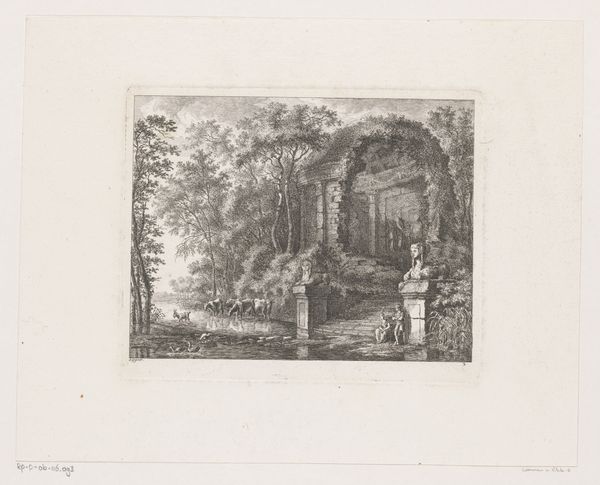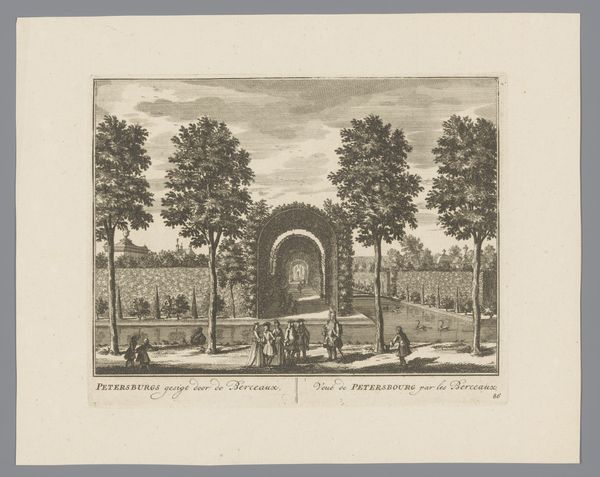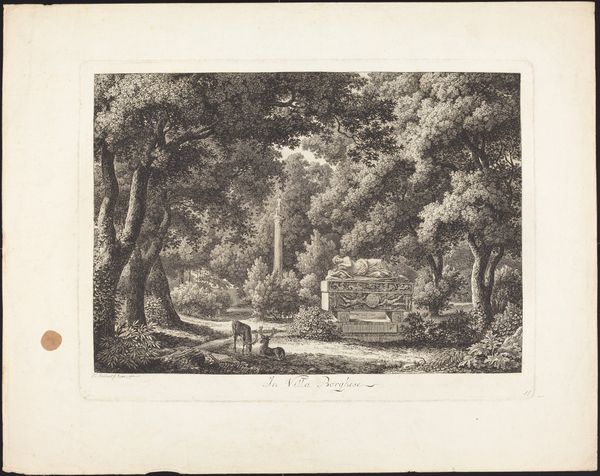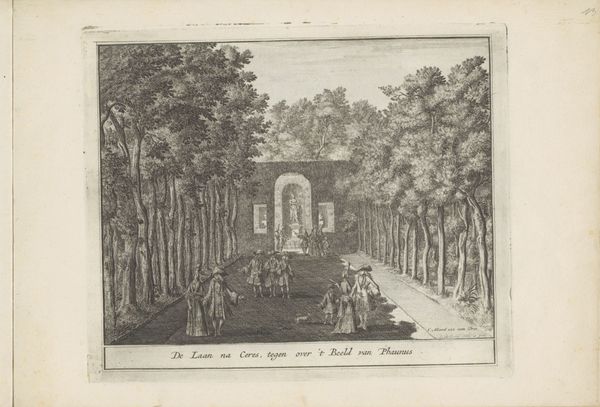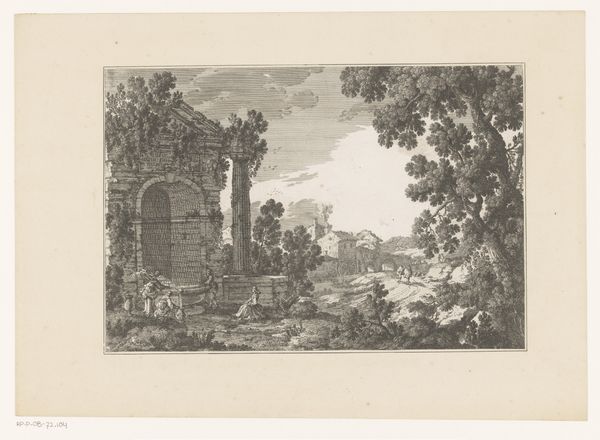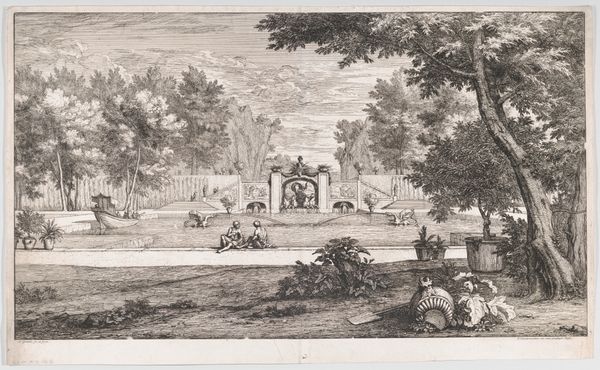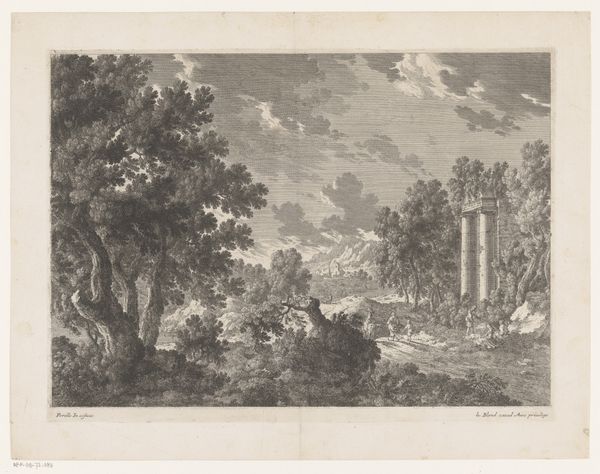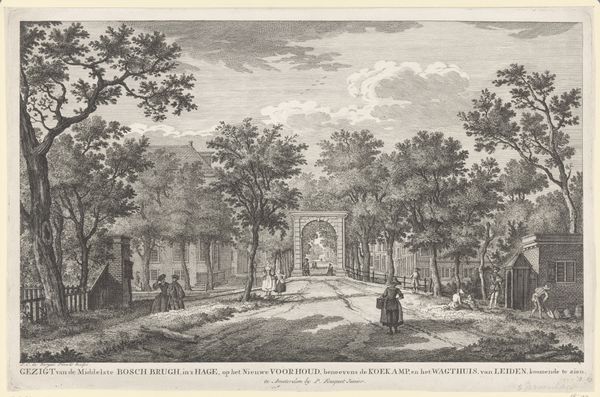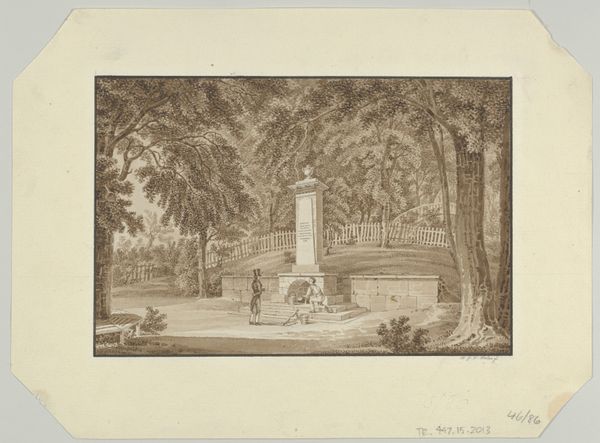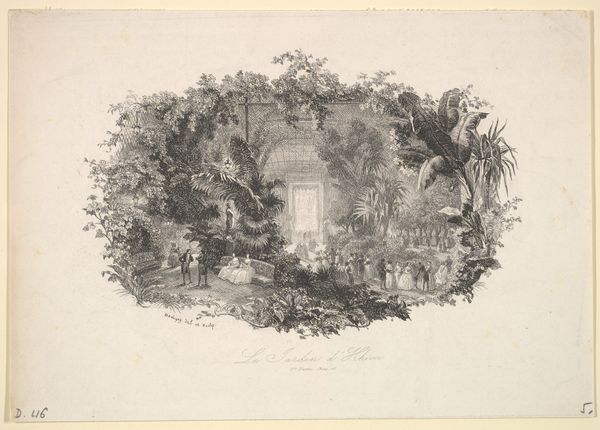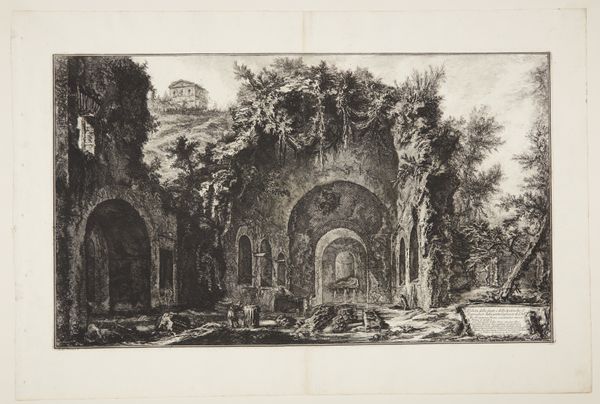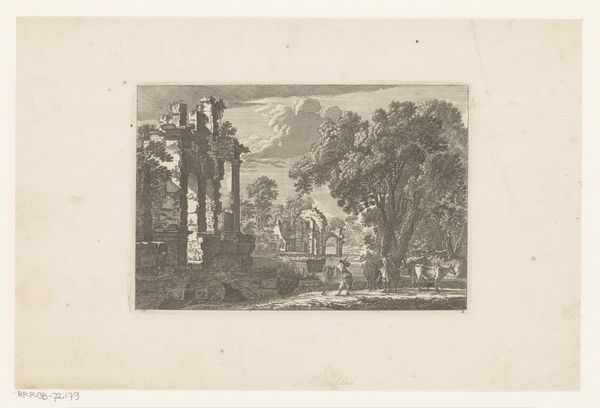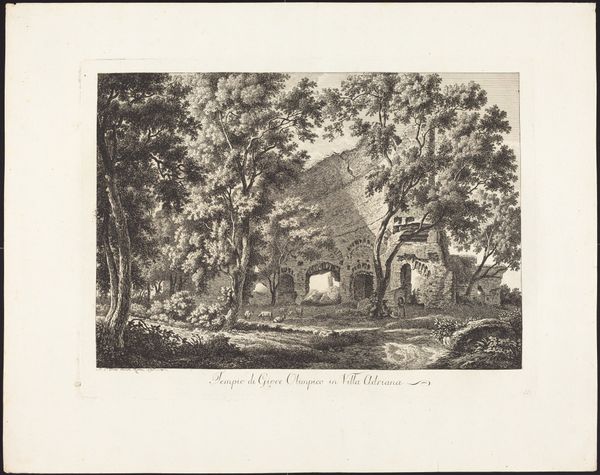
print, etching, engraving
#
neoclacissism
# print
#
etching
#
landscape
#
etching
#
genre-painting
#
engraving
Dimensions: 242 mm (height) x 298 mm (width) (plademaal)
Heinrich Christian Schumacher made this etching, "Entrance to a Manor," sometime in the first half of the 19th century. Look closely, and you’ll see that the image is composed of thousands of tiny lines, each one carefully bitten into the metal plate by acid. This printmaking process, though indirect, allowed Schumacher to achieve an incredible level of detail. Notice how the light filters through the trees, how the figures are rendered with a delicate touch. Etching was a popular medium at the time, because it allowed for the relatively easy reproduction of images. These prints would have been collected, bound into books, and circulated widely. This made it possible to disseminate imagery to a broad public, to create and reinforce ideas about nationhood, class, and taste. In this image, the stately manor is presented as a symbol of stability and order. And, with all the little figures walking or working around the estate, it is equally a picture of human industry. By appreciating the material and the making, we can understand how this print functioned within its social context, not simply as a picture, but as a vehicle for communicating a particular worldview.
Comments
No comments
Be the first to comment and join the conversation on the ultimate creative platform.
